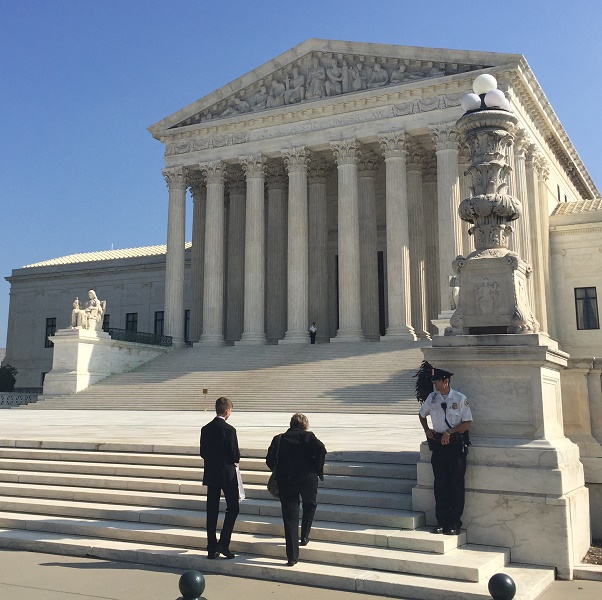Federal Court Again Upholds Protest Ban on Supreme Court Plaza
 Today the ban on protests on the Supreme Court’s 20,ooo-sq.-ft. plaza was again upheld in federal court, this time in spite of a religious freedom claim.
Today the ban on protests on the Supreme Court’s 20,ooo-sq.-ft. plaza was again upheld in federal court, this time in spite of a religious freedom claim.
In 2015, a different SCOTUS protest plaintiff named Harold Hodge lost his case over plaza access, in which he had claimed the ban was unconstitutional based on First Amendment assembly and Fifth Amendment due process principles.
That meant this year’s plaintiffs John Payden-Travers and Midgelle Potts were compelled to drop their constitutional claims, which left them hanging by the hope that the 1993 Religious Freedom Restoration Act would supercede the plaza ban.
D.C. District Judge Colleen Kollar-Kotelly said it did not. Her opinion relied on a different appeals court ruling that held if there is no “exclusive medium through which [individuals can] express religious views,” then “there is no a substantial burden on the exercise of religion.” In other words, exercising one’s religious beliefs on the court’s adjacent sidewalk has the same intended effect as protesting on the plaza.
Fix the Court executive director Gabe Roth responded to the ruling with this statement:
Today’s decision was disappointing but not unexpected, as a RFRA claim was always going to be more difficult to prove than a freedom of assembly claim.
Nonetheless, anyone who is familiar with Supreme Court practice knows that the Supreme Court Police can handle simultaneous assemblies – religious or otherwise – on the sidewalk in front of the building and on the plaza without compromising the safety of the grounds or of the individuals inside. In fact, the justices never even use plaza to enter or exit the building, so there is no real security issue with allowing public access.
The plaza ban is a sad yet fitting symbol of how the third branch has refused to open itself up to the public.
It should end immediately.